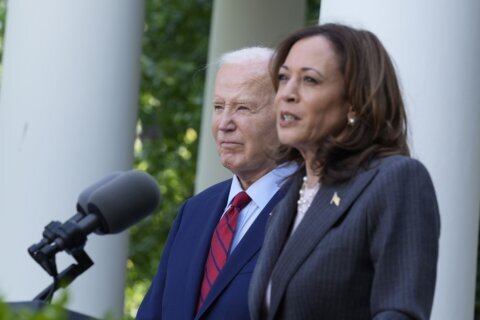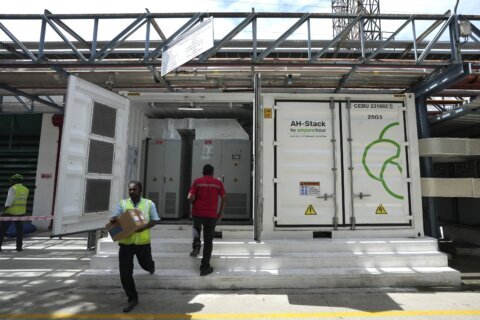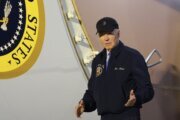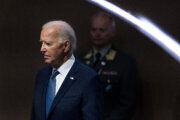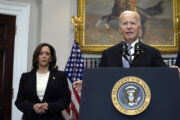The path for would-be pilots hoping to one day fly for a U.S. carrier is becoming increasingly accessible, as airline officials have turned more creative in their search to bring tens of thousands of new pilots into the industry over the next decade.
The Bureau of Labor Statistics projects about 18,000 job openings for airline and commercial pilots each year through 2031.
While many aspiring major airline pilots still take the traditional route, including getting a four-year undergraduate degree in aviation or a related field, a growing number of airlines and aviation groups are working to expand the pipeline of potential pilots. These efforts also aim to diversify a profession that is about 92% male and 96% white, according to the BLS.
[Read: A Guide to Different Types of College Degrees.]
Major airlines typically recruit from the regionals — because that’s where pilots initially get their hours and experience, says John Heimlich, vice president and chief economist for Airlines for America, a national trade association that represents major U.S. airlines and advocates for safety and security within the national airspace system.
“It’s a bit like baseball in terms of the major and minor leagues. Most people don’t just start out in the majors,” he says. “Most pilots begin their careers in the regional sectors and rise to fly for major airlines where the earning potential is higher, you can fly larger planes, and do more transatlantic flying — all things people like to do.”
How to Get an Aviation Degree
Students hoping to one day pilot the controls of a commercial aircraft must meet criteria as defined by the Federal Aviation Administration. The first step is working with a certified flight instructor to obtain a private pilot license. Students need a firm grasp of English and to hold the proper medical certification to attend both ground and flight school, where they must pass a series of both written and practical tests.
Students might also enroll directly in a flight school — such as ATP Flight School or AeroGuard Flight Training, both of which offer pilot training around the country.
For others intent on a more specialized degree, four-year programs like the ones found at Purdue University in Indiana, the University of Oklahoma, and Embry-Riddle Aeronautical University in Florida and Arizona can provide students the pilot credentials alongside a bachelor of arts or science in subjects such as aviation, aeronautical science or aerospace engineering.
Enrolling in the military is another option, as students who go this route may obtain the requisite licensing requirements that could one day help them transition to a commercial piloting career.
Cost of Getting an Aviation Degree and Payoff
Flight school can be an expensive endeavor. Students can expect to pay upwards of $80,000 to attend, though scholarships and loans may be available. Those attending a four-year degree program in aviation will typically pay those flight training costs on top of their tuition. Further relief may be in sight, as bipartisan legislation recently introduced in both the U.S. House and the Senate aims to broaden the access to financial support for qualified students.
[Read: Completing the FAFSA: Everything You Should Know.]
While the costs associated with obtaining a commercial pilot license may be lofty, aviation professionals suggest they be examined through the lens of potential earnings. According to the BLS, the median annual wage for pilots, copilots and flight engineers in 2021 was about $202,000, making it one of the top 20 highest-paid professions in the U.S.
And the industry is growing. Airlines for America reports that U.S. passenger airline growth is outpacing overall U.S. job growth; between 2019 to 2022, the number of passenger airline pilots jumped 5%, while those entering cargo airline flight decks climbed 21%.
New Routes to Becoming a Pilot
In the hopes of expanding and diversifying their pipeline of pilots, major airlines have eliminated the requirement for pilots to possess four-year degrees and expanded traditional recruiting networks.
Major carriers have established partnerships with flight-training institutions that will ultimately propel more pilots into their flight decks. United Airlines became the first major U.S. airline to own and operate its own flight school, the United Aviate Academy.
Since opening its doors in 2021, UAA has received over 30,000 applications. Between 300 and 500 students will enroll per year, says Dana Donati, CEO of the academy and a former airline pilot. In January, the company graduated its inaugural class of 51 students, 80% of whom were women and people of color.
The UAA program, based in Goodyear, Arizona, takes about a year to complete, and graduates leave as certified flight instructors. Then it’s time to build flight hours and gain the highest levels of certification — a process that takes approximately five to six years — at which point flying the larger aircraft for United may be an option.
“We are not replacing an aviation degree,” says Donati of UAA. “We are asking: How is a student going to be successful in this environment versus another environment? Perhaps a two-year or a four-year degree is a better option. It comes down to the student finding the best training environment for their success.”
The Federal Aviation Administration wrote in a statement, “We know we must think differently about recruiting the next generation, and that includes continually making information available to them where they are and in a format they embrace.” For instance: To encourage young people to explore career options within the aviation industry, the FAA in 2022 provided $5 million in funding for high school aviation classes.
That said, the FAA will, of course, stay focused on ensuring pilots “have the necessary qualifications to operate aircraft safely,” the group wrote.
Expanding and Diversifying the Pilot Pipeline
Diversifying the flight deck was part of the vision Donati brought to the Academy. “We want to reach out to communities who may never have thought about becoming pilots,” she said. To that end, United and other carriers have established relationships with a number of organizations to help identify potential scholarship recipients.
[Read: How to Find and Secure Scholarships for College.]
Ashley Carlson was exposed to aviation as a child, as her father was in the Air Force and held a private pilot license. As a young woman, she says she did not seriously consider following in her dad’s footsteps. “I didn’t see women of color as pilots, even with the early exposure.” In 2017 she took a Discovery Flight — an opportunity for would-be pilots to get in the flight deck of a small aircraft with an instructor, and soon after started ground school.
But the expense — flight instruction, plane rental and fuel costs — became prohibitive, and she “hit pause.” That pause turned to years. It wasn’t until a Black instructor reached out and provided the link to the Aviate page that she reconsidered a career in flight. After securing tuition assistance through a Sallie Mae loan, she moved to Goodyear in February to attend the UAA.
“To be on campus, and to also be part of a mentorship program (Sisters of the Skies) with all these women of color in different stages of their aviation career is so cool,” she says.
Parker Northrup, a former Air Force pilot who has worked in aviation for 35 years, is a professor at Embry-Riddle Aeronautical University, where students can choose between several degree and certificate programs, including bachelor’s, master’s and Ph.D.s in aviation and aeronautical sciences. An advocate for four-year degrees, he suggests students looking to fly big commercial jets consider that pilot shortages are cyclical, and that the industry is currently in a post-COVID, low-pilot-number cycle.
“Those of us who produce pilots are trying to do so efficiently,” he says. But he expects the industry will one day cycle back. “It is true that major airlines have gone to college degrees not being required,” he says, “but they are still highly desired. Those who have college degrees — those who understand the significant technological changes within the industry — are going to be better prepared to be competitive and successful.”
Whatever education route they took, pilots point to all sorts of different inspirations that brought them to the flight deck. Retired commercial pilot Randy Brauns recalls the summers growing up in rural Conesville, Iowa, where he loved watching pilots spray the melon fields near his house. “All I wanted to do was fly,” he said.
Now 65, Brauns says he never once regretted his career choice, one that was full of adventure and allowed him to see the world from above. “The perspective of this country when you’re six or seven miles up — it’s astounding.”
More from U.S. News
5 Reasons to Consider Community College
Is College Worth the Cost? Factors to Consider
How Employers View an Associate Degree
How to Become a Pilot — and How That’s Changing originally appeared on usnews.com

